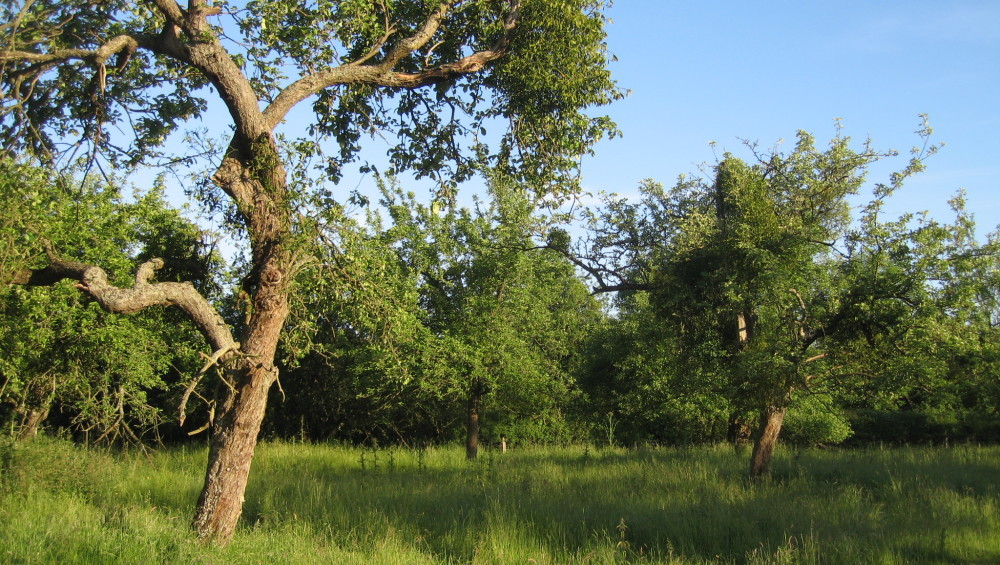Fruit tree health

Healthy trees in healthy orchards are much less prone to damage from pests and diseases.
Tree health jump to: Tree nutrition | Mycorrhizal associations | Water stress | Weed competition | Pests | Disease
Tree nutrition
The addition of nutrients to an orchard is generally unnecessary for tree health and cropping. In fact, the addition of fertilisers can damage the mycorrhizal associations between the tree roots and soil fungi. These associations are valuable to fruit trees as they help provide nutrients and water that the roots of the tree can’t access on their own, and protect the roots from attacking fungi and bacteria. If these associations are broken, your tree will be much more dependent on fertilisers in the future, or until the relationships have re-established.
Mycorrhizal associations.
The roots of fruit trees, like those of most trees, develop symbiotic relationships with soil fungi. The underground fungal roots, called hyphae, form an extensive network of threadlike filaments extending the reach of the trees roots, which allows otherwise unavailable nutrient and water to be absorbed.
These associations are particularly valuable to the trees in times of water stress, as the fungi networks are more efficient at absorbing ground water when it is in short supply.
The application of fertilisers can destroy the associations as tree root cells abandon these relationships when there is a temporary abundance of nutrients. This leaves your trees more dependent on regular fertilising in the future, as well as more prone to suffering in times of water shortage.
Fertilisers will have similar effects on the mycorrhizal associations of other plants in your orchard, resulting in the reduction of plant diversity over time and the increase of nutrient loving plants such as nettles and docks.
Another risk of fertilising a fruit tree would be the stimulation of excessive growth in the following season. Shoots that grow too rapidly tend to be soft and weak, making them much more vulnerable to both pests and diseases.
There are some instances where the addition of fertilisers is necessary, these should be considered carefully and preferably a slow release non synthetic fertiliser would be used rather than an instant-boost chemical fertiliser. In many cases a mulch will suffice.
If fertilisers are applied to boost the health or productivity of a tree, confine them to the area directly beneath the tree canopy rather than spreading them across the whole of the orchard floor.
Water stress
Short term water stress can be tolerated by a mature tree that is otherwise in good health, but at certain times of the year can directly affect your crop. A water shortage during blossom can reduce the fruit set and a water shortage during fruit development can result in smaller fruit of a lower quality.
Mycorrhizal associations with fruit tree roots can reduce the effect of short term water stress as the network of filaments can absorb water that is out of reach to fruit tree roots.
Trees on standard sized roots suffer less in times of drought as they have deeper, more expansive roots.
Reducing the weed competition directly below the trees will help during times of drought, but is only of real importance to young trees and those on dwarfing rootstock.
Weed competition
Competition for water and nutrients can be a problem for young fruit trees, less so for mature full grown trees. For the first few years of a trees life, until the root systems are established it is important to keep the area around the tree base free of weeds.
Rampant weed growth of scrub plants like bramble can affect full grown trees so should be kept under control and not allowed to dominate the orchard. If you are restoring an orchard that is dominated by scrub, a good proportion of this will need to be removed, after which you will need to manage the regrowth.
Pests
Traditionally managed orchards are less likely to suffer significant pest and disease problems than intensively managed orchards, in part because of the biodiversity they support. Most pests will be controlled by their natural predators before they can reach population levels that cause unacceptable damage to your fruit.
Non chemical methods of pest control are likely to be the least detrimental to the wildlife in your orchard and generally act in prevention of outbreak rather than a cure. However even organic and traditional controls will alter the balance of habitat and species in your orchard, sometimes leading to the need for further spraying. For this reason all pesticide use, organic or not, should be kept to a minimum or preferably not used at all.
The most common symptoms of pest problems are tree defoliation, aphid damage and maggots in the apples which is normally coddling moth.
Find out more about orchard pests and methods of pest control
Diseases
Orchards can become infected by various diseases that can reduce or degrade your crop, damage or even kill your fruit trees in severe cases.
Luckily, the most common diseases of fruit trees can be kept under control by pruning and removing the affected branches or leaves at the early stages of infection. This goes for diseases like scab, canker, silverleaf and fireblight. Low levels of some of these diseases are to be expected in traditional orchards and some low levels can be tolerated if your trees are otherwise in good condition.
Find out more about orchard diseases and methods of control
